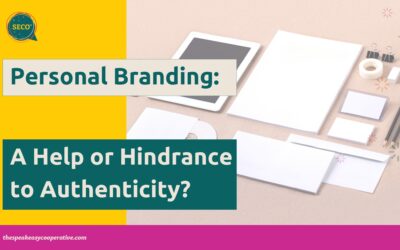Every year, I read multiple comments and stories about what it’s like to run a voice studio during the holidays. We are singers, after all, and even now in the semi in-person/semi-virtual world, we add performing, extra worship/church services, prepping students for extra singing gigs, caroling, and other holiday money makers to our plate.
The holidays are a unique and feelings-filled time of year for everyone. It’s busy, and have to manage family needs with business needs at a different pace than during other times of the year. Let’s talk some ways to draw and implement boundaries this year, as we strive toward peace and joy.
It seems that there’s this underlying acceptance that “it will just suck” and “Just make it through” is the best way to get through, yet I’ve come to see that’s not always the case.
Sometimes, yes, we power through. Many times, however, we need to rethink our boundaries. In order to make the decisions we need to for the next six weeks, let’s pre-game, and make some choices before the heavy load comes upon us.
What are Boundaries, Really?
We see the word “boundaries” everywhere. We are encouraged to have them and there are memes a plenty talking about the downside of not having them, or sounding a rallying cry about them.
Yet, the more people I speak with about boundaries, the more people admit to me that they don’t actual know what they are.
Boundaries are guidelines, rules or limits that a person creates to identify for themselves what are reasonable, safe and permissible ways for other people to behave around them, and how they will respond when someone steps outside of those limits.
Some of the barriers we come across when setting a boundary are our fear of rejection and abandonment – losing students, and fear of confrontation, not knowing what to say and how to say it because we don’t want to hurt others.
Sometimes we feel guilty because we’ve been conditioned to make people happy. I mean think about it, our whole entire performance and singing life we have been implicitly training to ask people to be happy with us. From our very first audition to applying for a young artist program, singers are in the business of making people happy.
Add to that, we may have not had a good model from our own voice lesson taking experience, and think “this is just the way it is.”
Unfortunately, that’s given us a skewed idea of customer service.
Why Drawing Boundaries is Essential
Because of the highly relational and intimate nature of our work, we are naturally GIVERS, as singers, performers, and teachers.
It is often said that givers must draw firm boundaries because takers don’t know how to. With the high level of empathy in our profession and all that we have experienced in emotional cost and financial cost in our own singing and teaching journey, we often impose those experiences on to our students or families.
When we don’t have clear boundaries we’re sending mixed messages to people in our lives, and they don’t know how to interact with us. We teach people how to treat us. Understanding what behaviors we embrace in our studio and what we will not tolerate in our studio is an act of kindness.
It’s important to note that boundaries are not a scope of service, they’re not a contract or agreement – it’s not a wall of NO all the time, and it’s not yelling at people or being hurtful.
Boundaries are not policies, either.
Your policies are there to help people understand your boundaries, yet your boundaries are an internal compass that allow you to enact your policies.
With healthy boundaries, we can be assertive. We can confidently and truthfully say yes or no and be okay when others say no to us.
We are able to separate our needs, thoughts, feelings and desires from other people. We get to recognize that our boundaries and needs are different from others in any relationship. We are able to give people space to feel their feelings about something that they may not be happy about – like a rate raise, or having to pay for that lesson they missed when it’s clearly stated in the policies that they signed, or saying no to teaching an extra lesson or taking on an additional church service.
Healthy boundaries empower us to make healthy choices and take responsibility for our actions while distancing ourselves from the feelings and reactions of others.
How to Determine Your Boundaries for the Holidays
Even if you already have pretty solid boundaries around your time, money, energy, and needs, there comes seasons when we have to re-establish, and perhaps even strengthen our boundaries.
To determine your boundaries, even if you already have a good idea of them, ask yourself these three questions:
- How do I want my time to be spent?
- How do I want to feel (in my mind and body!) over the next six weeks?
- What support do I need to implement my needs and wants?
Determining what we want is often the hardest part. You will most likely need to set aside dedicated time to look at the calendar, what you already have on your plate, and what you want to add to it, as you move forward.
It may look something like this:
“I want to be at home four nights a week”
“I want to sing three concerts. I can dedicate six hours of rehearsals for each.”
“I want to feel slow and spacious!”
“I want to feel busy and bustle-y and cheery!”
“I want my body to feel energized.”
“I want to chest to feel high and my breath to feel easy/free.”
“I want to keep my schedule as is, and not add anything to the calendar.”
“I want to reduce my workload and rest.”
“I want to feel at peace.”
“I need my partner to say ‘yes’ when I ask them to help with chores.”
“I need my kids to leave me alone when I am practicing.”
It’s that simple! (HA!) You’ve decided your boundaries.
Implementing Boundaries
Once you’ve answered the three questions, and have your boundaries, now comes the hard part – actually implementing them.
Here’s where pre-determined responses come in super handy.
Start this process by imagining some scenarios in which your boundaries being pushed or crossed. (I know you can!)
Then, do a little role playing.
Imagine or write down the words you will use to respond to the boundary push. You can even create a template that you keep in your Note keeping app of choice.
Here are some examples:
“I would love to sing at the holiday show! I’m able to rehearse on Tuesday or Wednesdays. Any rehearsals outside of that, I can’t attend.”
“I love that you got asked to sing at your holiday church services! I won’t be able to meet last minute, but you can send me a video and I can review it. I’ll send you an invoice for $XXX when I send you my responses!”
“When I am practicing, you can eat a snack, or watch a show. Please so not come into where I am practicing to ask for anything until I am finished. I promise to let you know when I am done.”
“Dearest Spouse/Partner, this year, we need to be a united front when it comes to the time we spend with in-laws. When do you have time to sit down and dedicate time to making some decisions?”
“New Years Eve parties are so fun! This year, we are going to have our own at home – thank you so much for the invite, though!”
Act out these responses in the mirror, or with a trusted friend.
When you get into a situation where you need to draw a boundary, you may begin to feel angry. This is normal! Take a few breaths, remember that you are a teacher in this moment – a “how to treat me” teacher – and you can do so with gentle firmness.
See, the trick is, knowing your boundary is only the beginning. Implementing your boundary is where the freedom begins.
Note: If you haven’t drawn boundaries before, you may throw people for a loop. I want you to remember two things:
- The only people who get upset about you drawing a boundaries are the people who benefited by you not having them.
- Healthy boundaries include letting other people have their feelings of anger at your boundary and you don’t have to make them happy.
Boundaries as Self-Nurturing
When we begin to create healthy boundaries – that internal Compass – our self-esteem and self-respect begins to grow. It allows us to share personal information in a mutually sharing and trusting relationship, it allows us to protect physical and emotional space from intrusion, we get to have an equal partnership with our clients where responsibility is shared.
When you know what healthy boundaries look like, you begin to see how they can be a way to take deep care of ourselves, and ensure that we are being treated with deep care by others.
I loved this blog article by Eleanor Beeslaar. In it, she shares the following:
Here are just a few examples of what healthy boundaries might look like:
- Valuing your personal boundaries and not compromising them for someone else.
- Saying “no” and accepting when others say “no.”
- Knowing who you are and what you want, and communicating that to others.
- Engaging in appropriate sharing.
- Not letting others define you or your sense of self-worth.
- Knowing that your needs and feelings are just as important as the needs and feelings of others.
- Knowing that you have the right to your emotions and feelings.
- Respecting others’ values, beliefs, and opinions, while knowing that you do not have to compromise your own values, beliefs, and opinions.
I don’t know about you, but when I read that above list, and I think of the people in my life who example these things, and behave in these ways, I feel warm and safe inside! And that is deeply nurturing to me!
It’s a journey, and you can do it, because you do hard things.
Realizing that perhaps you haven’t had the best boundaries in the past, or that you press other peoples boundaries can be a tough realization.
Give yourself time and space to work out what you need, and know that over the long haul, there will be moments of anger, disappointment, shame, and grumpiness.
And on the other side of it all, there will be clarity and wisdom.
Have you done work around your boundaries? If so, what has worked? What have you learned about yourself and others?
You can drop a comment below, or sign up for our mailing list, here, and write us as a reply to tell us once you’ve gotten the first email.
It’s almost the holidays, and we’d love to support you.
Happy Holidays to one and all, however you are celebrating!
All My BeastyBoss,







0 Comments